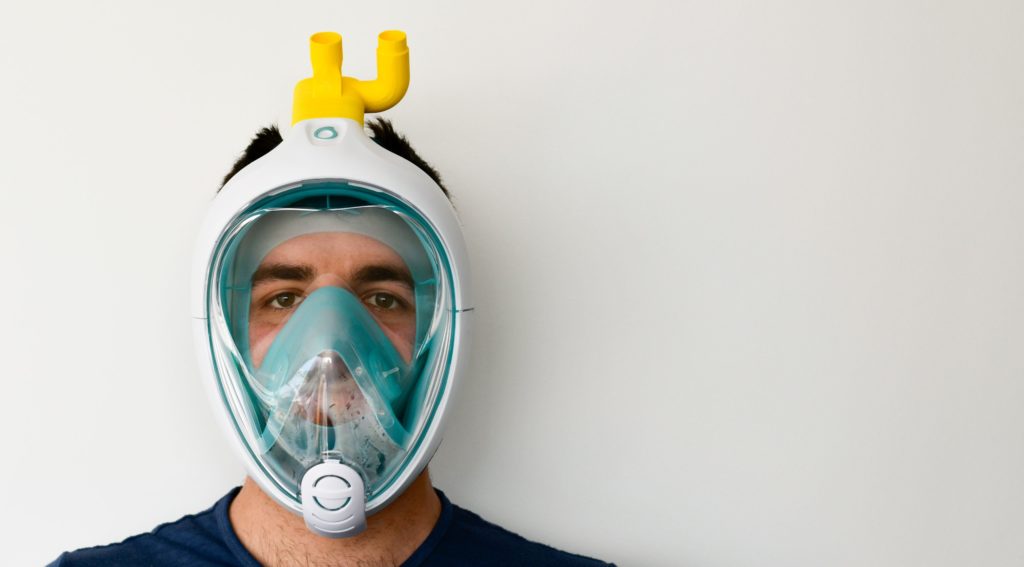If there’s one thing that is in high-demand now across the globe, that’s ventilators. More than 400.000 cases of the virus have left many hospitals without stocks of this key medical equipment, which can help in artificial breathing when lungs fail to do it naturally.

Nevertheless, when resources lack, creativity and innovation rise, and that’s what has happened here. Influenced by a large number of cases in their country, a group of Italian engineers has developed and tested a 3D-printed adapter that can turn a snorkeling mask into a ventilator.
This is their second innovative creation since the start of the coronavirus outbreak in Italy. The engineers previously visited a hospital that didn’t have sufficient ventilator valves and, using a 3D printer, developed new ones and printed them in just a few hours. Following that first experience, the team was contacted by the former head physician of the Gardone Valtrompia Hospital.
“He shared with us an idea to address the possible shortage of hospital C-PAP masks, which is emerging as a concrete problem linked to the spread of COVID-19: an emergency ventilator mask,” they said.
The first step was finding a company that produced snorkeling masks and agree on a partnership. That was Decathlon, a French sporting goods company. Once they had the product, the engineers dismantled and studied it to check how to use a valve to connect the mask with the ventilator.
Other designers had already created 3D printable adapters to transform similar snorkeling masks into medical ones. The innovation by the Italian engineers was that the adapter could be modified for the mask to be connected as a ventilator, a key resource needed during the outbreak.
Once they had the new product, they tested it at the Chiari Hospital by connecting it to the ventilator body, proving it worked successfully. They also tested it on a patient with good results. Nevertheless, the invention should only be used in an emergency situation, the engineers warned.
“We are reiterating that the idea is designed for healthcare facilities and wants to help in realization of an emergency mask in the case of a full-blown difficult situation, where it is not possible to find official healthcare supplies. Neither the mask nor the link is certified and their use is subject to a situation of mandatory need,” they said.
The engineers patented the valve that connects the mask and the ventilator so as to avoid speculation on the price. The patent is free as the objective is “that all hospitals in need could use it if necessary,” they said. They also shared the file required to create the valve with a 3D printer, which they claim is easy to manufacture, on their website.
This means that any healthcare facility that needs ventilators can purchase the Decathlon mask and then produce the valve in any local 3D printing facility. “Our initiative is totally non-profit, we will not obtain any royalties on the idea of the link, nor on the sales of Decathlon masks,” they said.
Similar initiatives can be seen in other parts of the world, using 3D printers. In Spain, also severely affected by the outbreak, a group of engineers and doctors have partnered up to develop low-cost respirators and print as much personal protective equipment as possible.


